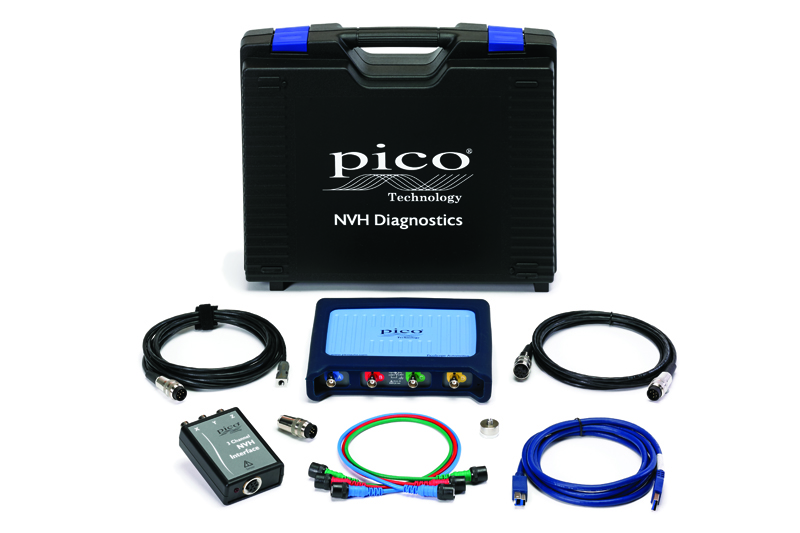
Steve Smith, Automotive Application Specialist at Pico Technology, answers a user’s questions on Noise, Vibration and Harshness software.
Q. The NVH software sounds interesting but I bet it’s complicated. Is it?
A. The NVH software is designed with ease of use in mind, utilising a vibration Setup Wizard that requires minimal input from the user.
An example: With an FWD vehicle and the NVH software connected to the OBD socket, the data input required would be: 1.Tyre size, 2. Engine configuration (In-line or V), 3. Cylinder count, 4. Interface election (three-channel), 5. Microphone or accelerometer sensor.
The software will then allow you to carry out a road-test whilst recording either sound or vibration. The capture of such valuable data is both speedy and intuitive. I often say there are two skill sets involved with both PicoScope and NVH. These are: 1.The capture, 2.The analysis. In the majority of cases, the NVH software will identify the offending frequencies based on the inputted data, thus reducing the analysis time.
Q. Does the NVH software contain any help functions?
A. The contents tab will have all the information you require with regards to the software application, connection and features. For help with vibration theory, the Show Vibrate Help will offer additional support, with interpretation and descriptions surrounding automotive NVH theory.
Q. Can I use more than one accelerometer or microphone with NVH?
A. Absolutely, yes. Any combination of accelerometers and microphones can now be attached to PicoScope to measure the transfer path of a vibration or to locate the source of vibration/sound. You are only limited by the number of scope channels on your device – i.e. a 2-channel scope will allow for any two combinations of microphones or accelerometers.









